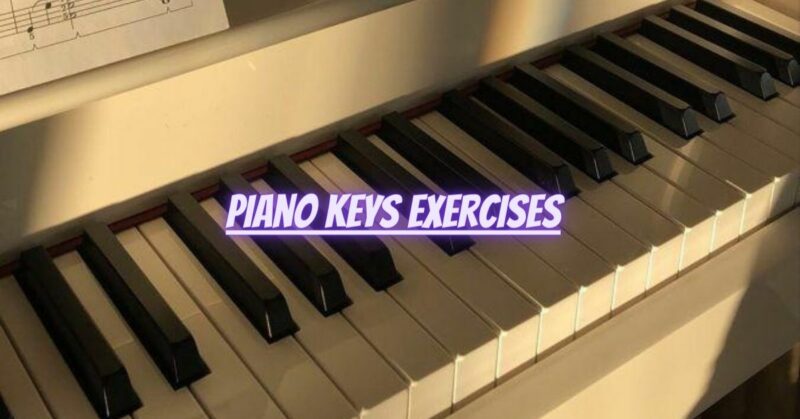To become a proficient pianist, mastering finger dexterity and control is essential. Piano keys exercises are a valuable tool in developing the strength, agility, and coordination required to navigate the keyboard with ease and precision. Whether you are a beginner or an advanced player, incorporating regular exercises into your practice routine will elevate your playing to new heights. In this article, we will explore a range of piano keys exercises designed to enhance your finger technique and musical mastery.
1. Finger Independence Drills:
Finger independence exercises focus on training each finger to move independently of the others. Start by placing your hands on the keyboard with your fingers gently curved. Practice lifting each finger individually while keeping the others still on the keys. Gradually increase the speed and accuracy of the movements, ensuring that each finger operates independently and effortlessly.
2. Scales and Arpeggios:
Scales and arpeggios are fundamental piano keys exercises that improve finger coordination and help familiarize you with different keys and patterns. Begin with major scales, playing both hands in parallel motion, and then progress to playing them in contrary motion. Explore minor scales, chromatic scales, and various arpeggio patterns to expand your technical prowess.
3. Hanon Exercises:
Hanon exercises are a popular set of finger exercises designed to build finger strength, flexibility, and speed. These exercises consist of repetitive patterns and are available in different levels of difficulty. Practice Hanon exercises in different keys to challenge yourself and enhance your finger control.
4. Finger Stretching and Warm-up:
Before diving into intense piano practice, warm up your fingers with gentle stretching exercises. Stretch each finger by placing the tip on the edge of the keys and pressing down gently. Gradually increase the stretch, ensuring you do not experience pain or discomfort. This warm-up routine prepares your fingers for more complex exercises and reduces the risk of injury.
5. Octave Jumps:
Octave jumps exercise your ability to move your hands quickly and accurately across the keyboard. Practice jumping from one octave to another in both hands, maintaining a relaxed hand position and landing on the target keys precisely.
6. Chord Progressions:
Chord progressions are an excellent way to improve finger coordination and memorize common chord sequences. Play simple chord progressions like I-IV-V or ii-V-I in different keys, focusing on smooth transitions between chords.
7. Staccato and Legato Playing:
Staccato playing involves producing short, detached notes, while legato playing requires connecting the notes smoothly. Practice both techniques separately and combine them in musical passages to add texture and variety to your playing.
8. Sight-Reading Exercises:
Sight-reading exercises challenge your ability to read and play music on the spot. Choose pieces or exercises at an appropriate difficulty level and attempt to play them without prior preparation. This exercise enhances your reading skills and adaptability on the piano keys.
9. Rhythm Exercises:
Rhythm exercises develop your sense of timing and precision. Practice playing rhythmic patterns, syncopated rhythms, and irregular time signatures to improve your rhythmic accuracy.
10. Dynamic Control:
Work on playing with a wide range of dynamics, from pianissimo to fortissimo. Use piano keys exercises to explore various dynamic changes within a piece, bringing out the expressive qualities of the music.
Conclusion:
Piano keys exercises are a vital part of any pianist’s practice routine. Regularly incorporating these exercises into your daily practice sessions will sharpen your finger technique, enhance your musicality, and unlock your true potential as a pianist. Combine technical exercises with pieces you love to play, and you will find yourself achieving greater fluency and artistry on the piano keys. Happy practicing and happy playing!


